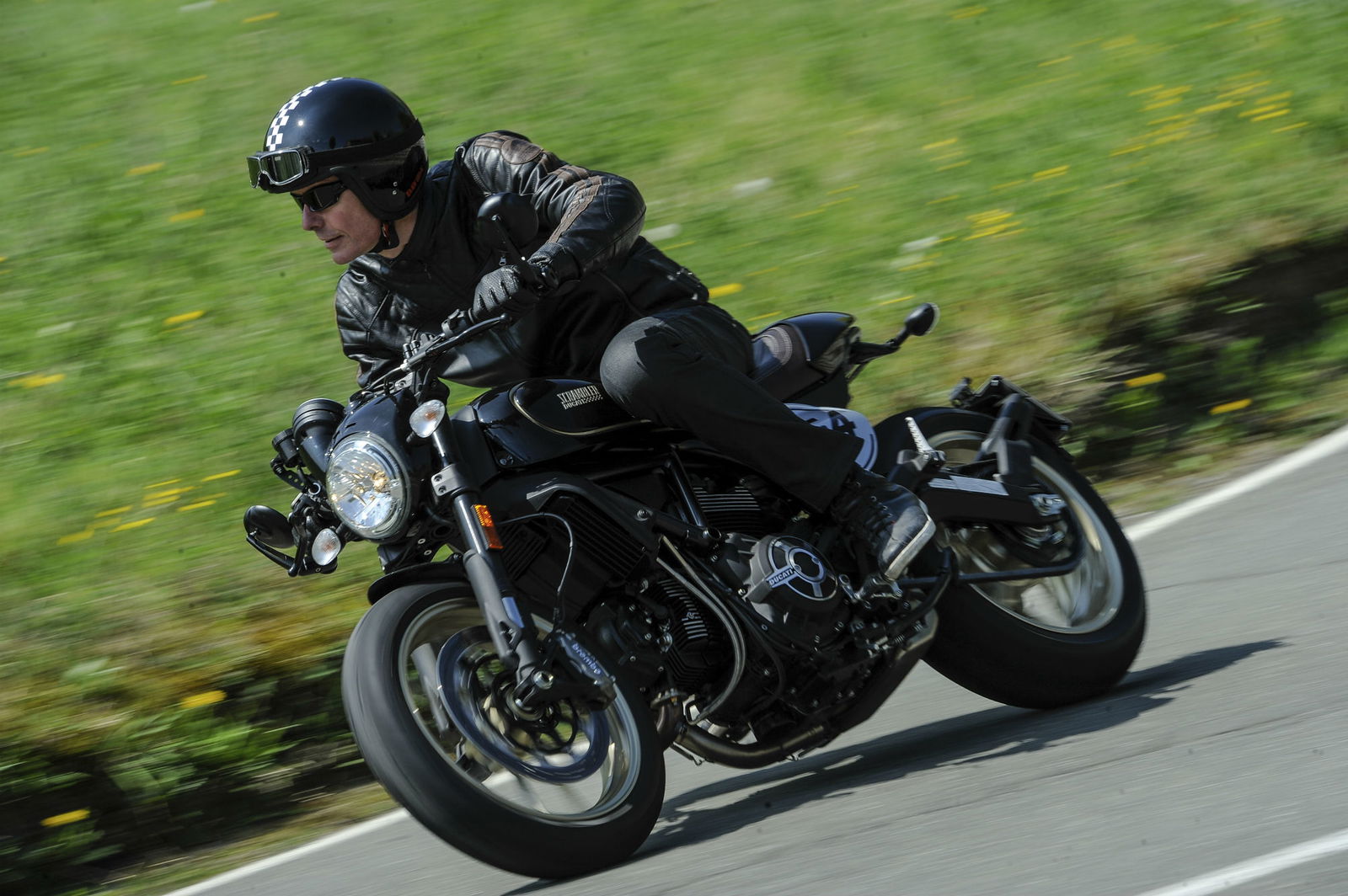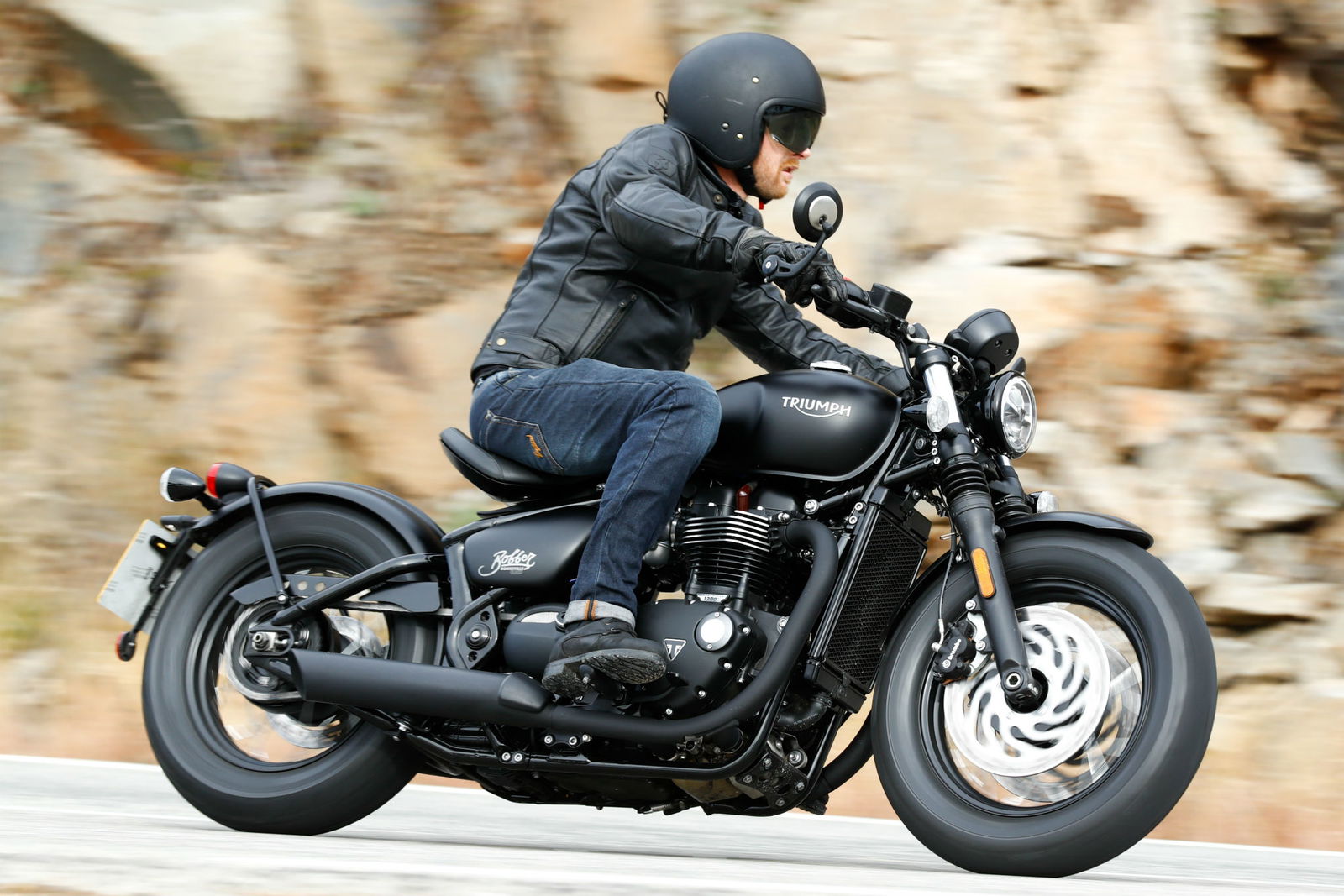Ducati Monster 821 review
We try out the Ducati Monster 821 on some of Italy's more questionable roads

DUCATI's Monster brand is celebrating its 25th birthday this year. That makes it older than Marc Marquez, Friends, the iPhone, and myself.
Not that I’d fall into the same league as the others but I digress.
My point is that I’m unfortunately too young to remember the clamour of the original Monster 900’s debut at the Cologne IFMA in October 1992.
But many people recall with fondness that dramatic styling and sunshine yellow paintjob. And Ducati has sought to recreate that icon with the updated Monster 821 – an ode to the original, if you will.
In fact, the Italian manufacturer has gone so far as to dub it ‘The best-balanced Monster’, which is ‘more beautiful and more sophisticated’ than its predecessors.
However, in technical terms very little has changed. There’s a new TFT dash, muffler and LED headlight, while the bike itself has inherited the streamlined, muscly look of the Monster 1200 – and its tank. The tail has been fully redesigned and comes fitted with a cowl as standard.
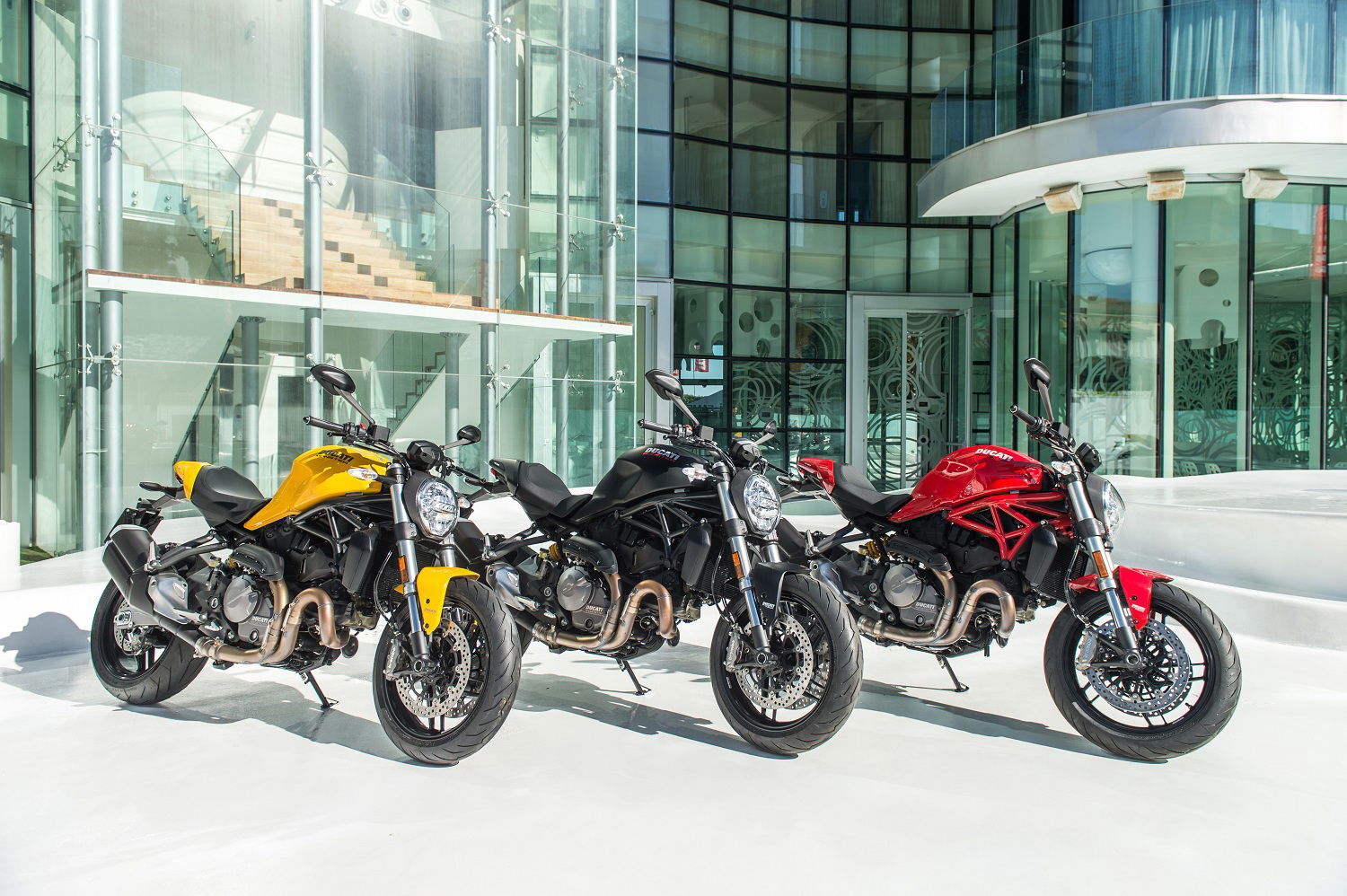
Available in one specification and three colours, the facelifted middleweight Ducati Monster is extremely easy on the eye – especially in that glorious ‘Ducati Yellow’.
But at £9,895 for the standard red model, and £200 more for either the ‘dark stealth’ (black) or yellow variants, it’s far from easy on the wallet.
With Triumph’s new-for-2017 765cc Street Triple S costing only £8,200 and Yamaha’s MT-09 range starting from even less – £7,999 – one question is poised on everyone’s lips: has Ducati done enough to bring the Monster into 2018?
Ducati Monster 821: Engine
Under the new tank (which reduces fuel capacity from 17.5l to 16.5l), the 821 features the same Testastretta 11° engine as seen in the previous model, which Ducati made Euro4 compliant at the beginning of this year.
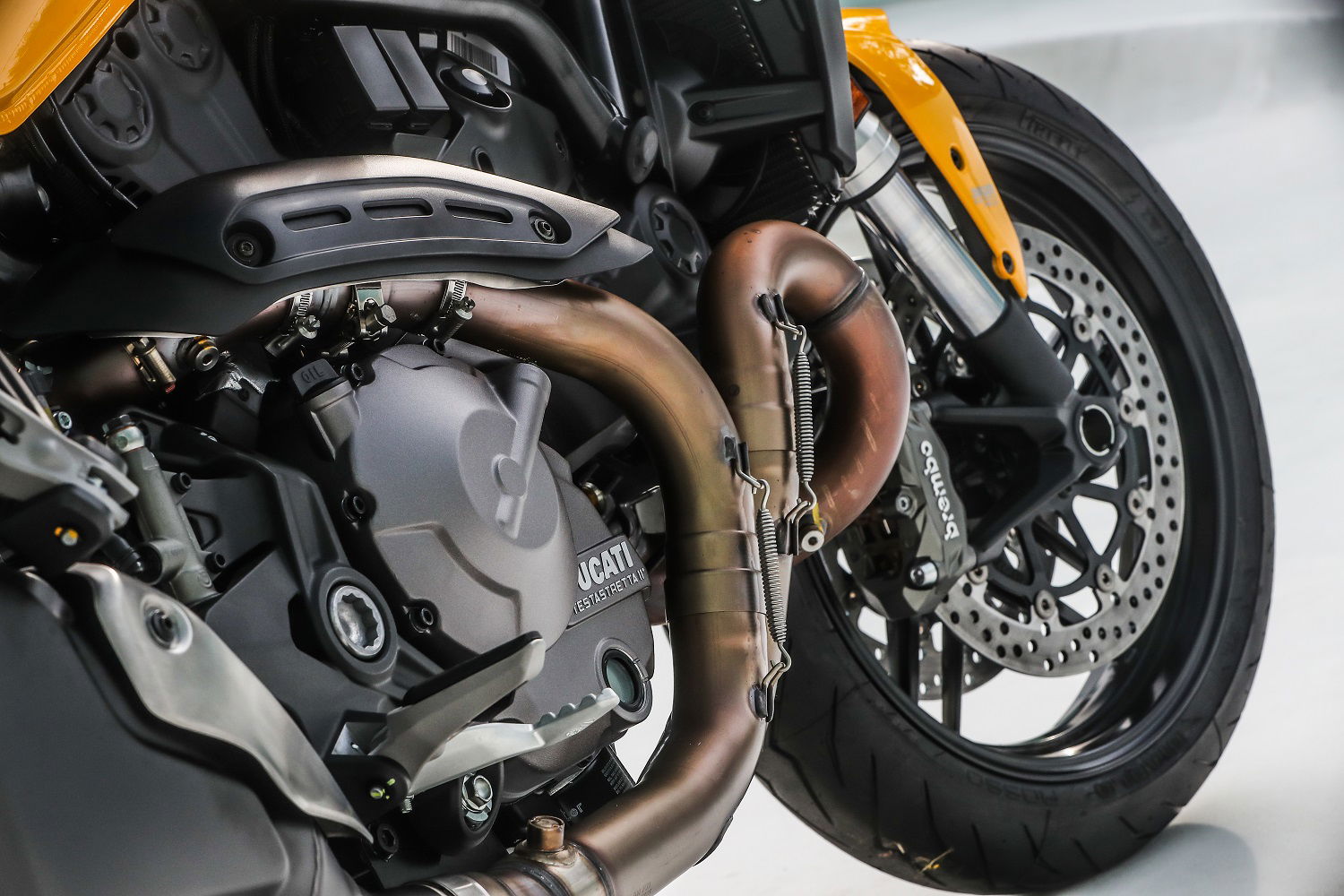
Making 109hp at 9,250rpm and 63lbft at 7,750rpm, it’s fun, easy and unintimidating, with progressive power throughout the rev range.
But while ample power is there, the long gears mean it lacks the urgent power that gave the Monster its name.
Second gear is good, but overall the gears feel slightly flat in every mode – of which there are three: sport, touring and urban.
Sport offers full power, with a direct ride-by-wire throttle response, reduced traction control and ABS and rear wheel lift control is disabled.
Touring, meanwhile, dials it back a bit. While full power is still available, it's delivered more progressively. There’s increased traction control and ABS intervention, while rear wheel lift control is ‘moderate’.
Finally, Urban offers a limited 75hp via a progressive throttle response. Traction control and ABS are set to high levels in order to maximise braking stability.
All three modes feel noticeably different and unsurprisingly Sport was my favourite. While Urban’s high level of rider aids makes the Monster a very attractive inner-city prospect, it could do with just a tiny bit more power to help you get ahead of traffic.
The rider aids, comprising eight-level traction control and three-level Bosch ABS are unobtrusive in all modes.
Ducati Monster 821: Handling
It’s fair to say that the Monster was not built for the broken roads around Rimini that our 110-mile test ride took in. Potholes, cracks and mismatched tarmac stretched as far as the eye could see, and were enough to unsettle the bike both in straight lines and bends.
Back on solid ground and the Monster was no longer a timid, skittish pet. It was agile and light, all 206kg of it, and steered with ease. High ground clearance means that you’re not at risk of peg-scraping unless you really push it.
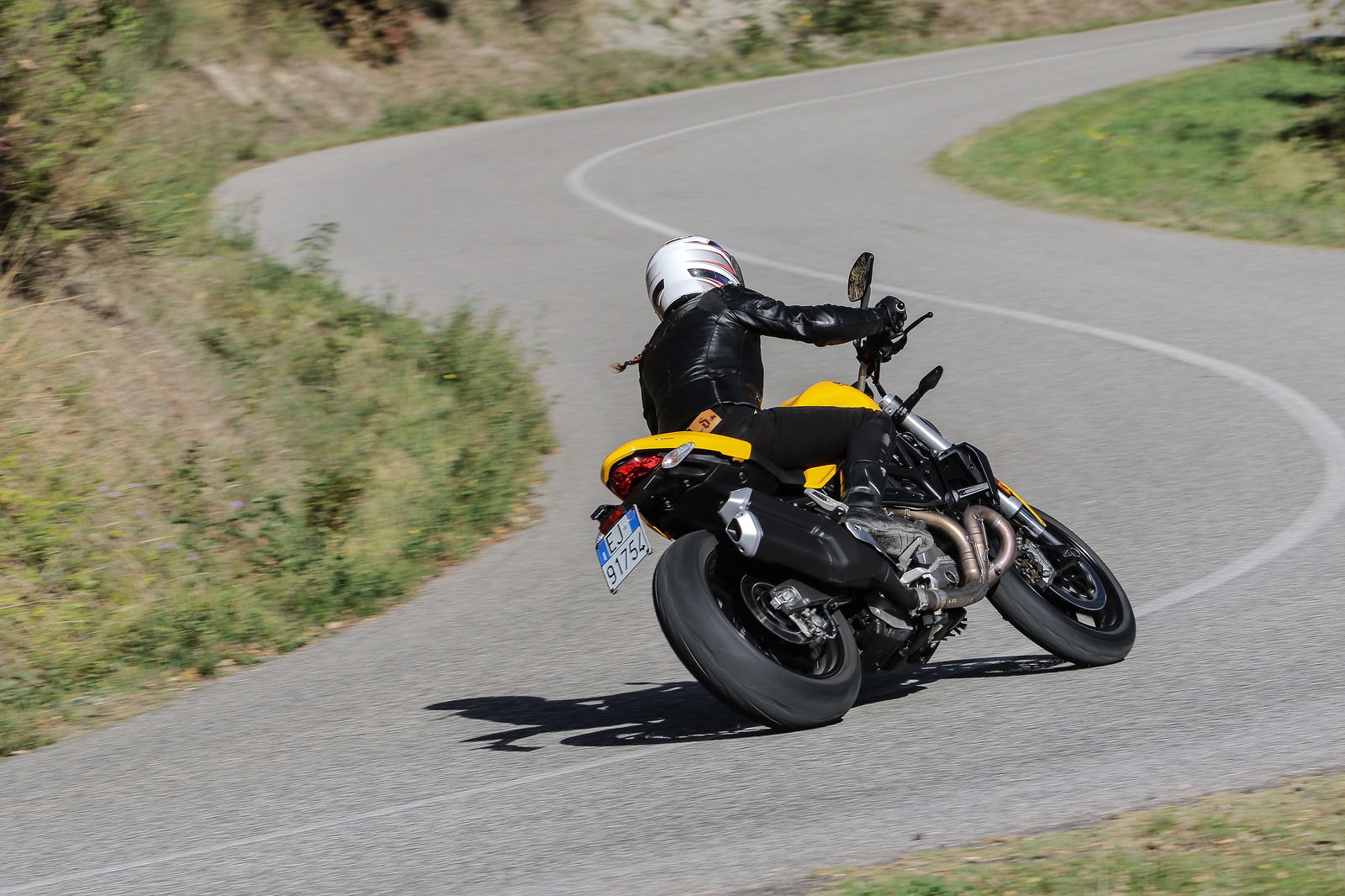
The Pirelli Diablo Rosso IIIs, which are new for 2017, offered average grip on the dodgy Italian tarmac, although I felt the rear step out a number of times. On smoother ground they felt more reassuring, offering improved handling over the previous model.
Ducati Monster 821: Suspension
The non-adjustable Kayaba 43mm inverted forks – a relic from the last model – made themselves immediately noticable, sending shocks through my wrists and arms on the rougher road surfaces.
The pre-load and rebound adjustable Sachs monoshock is apparently set up for an 80–85kg rider. At 56kg, I found it bouncy.
On smoother tarmac the front felt sporty and sharp, although it dived at the slightest touch of the sharp front brake. The rear, meanwhile, could still have been firmer.
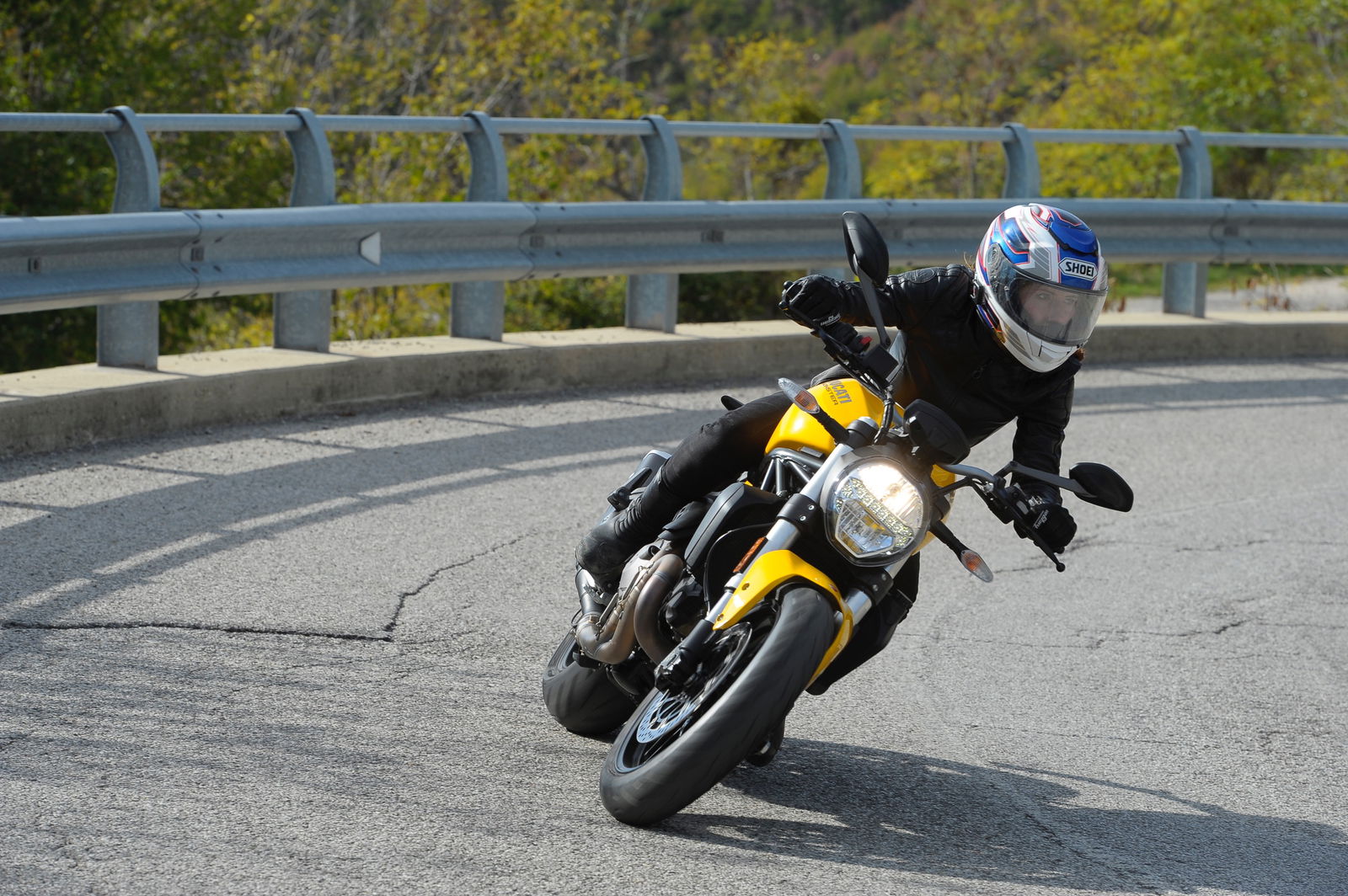
Ducati Monster 821: Brakes
The brakes felt sharp – almost too sharp for the 821. At the front are Brembo radial calipers grabbing twin 320mm discs. A light squeeze on the lever is enough to bring the bike to a rapid halt.
At the rear, another Brembo unit clings on to a single 245mm disc.
Ducati Monster 821: Equipment
In its new clothes, the 821 is a very attractive Monster. It’s sleek and compact, sitting on the sportier side of naked.
Available in one specification and three colours, the face-lifted middleweight Monster looks best in the launch colour of ‘Ducati Yellow’.
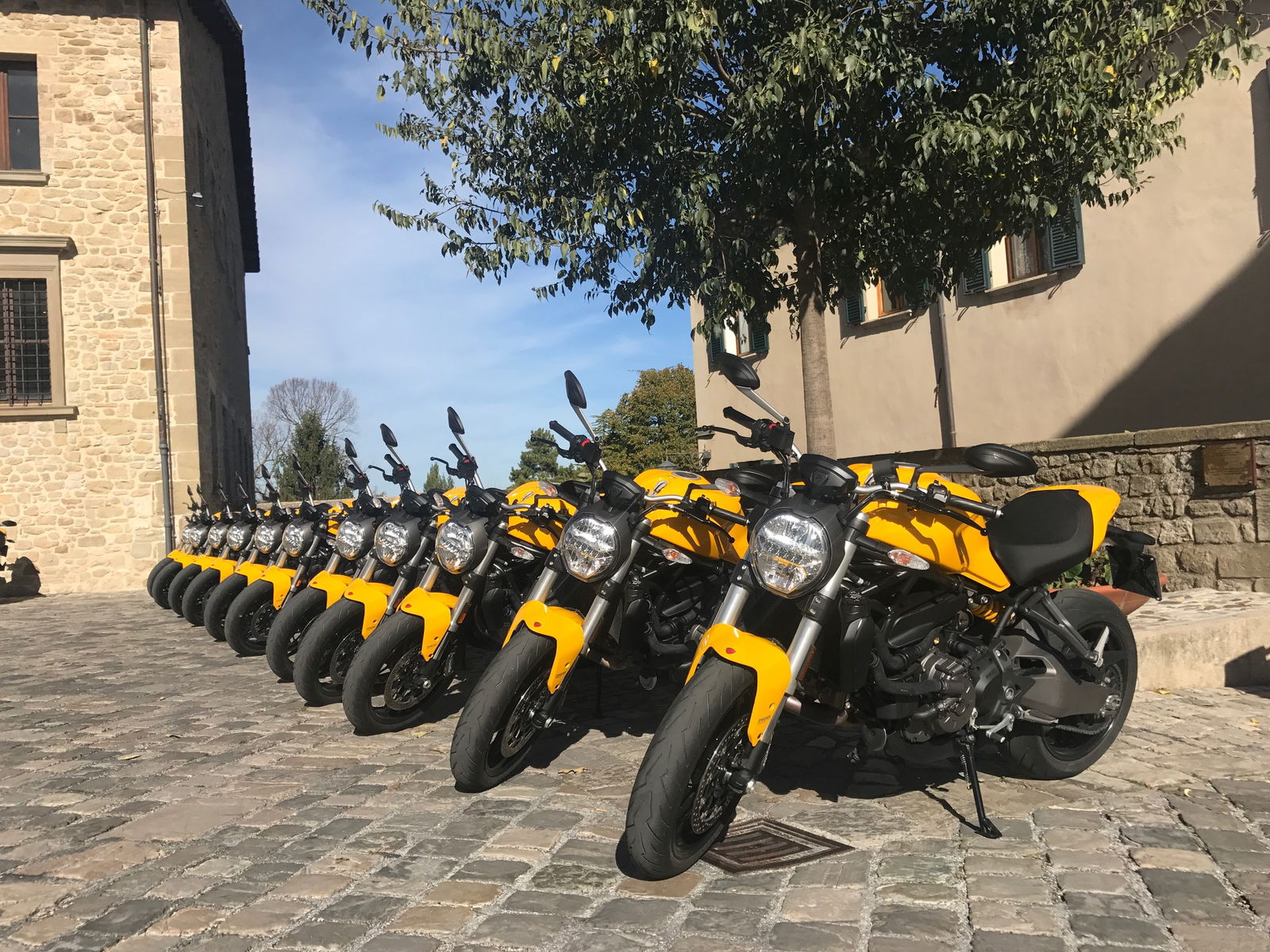
It’s received a new LED headlight and a TFT dash, which boasts a different display for each riding mode and is also compatible with the optional Ducati Multimedia system.
The tail has been fully redesigned and now comes fitted with a cowl as standard.
The new muffler mimics that of the 1200 Monster, while the muscly tank – complete with that contentious ski-boot buckle clip – is a direct hand-me-down.
Why is that clip so controversial? Well, while a genuine throwback to the Monster of yesteryear, it doesn’t actually serve to undo the tank on these newer models. Instead, there are bolts underneath which render the clip useless.

Among the Monster 821’s extensive optional equipment list is a quick-shifter, costing £192.
While the journalists on launch were unanimous in wanting to try this out, Ducati had chosen not to add it to the test bikes.
.jpg?width=1600)
Should I buy the Ducati Monster 821?
Has Ducati done enough to bring the 821 up-to-speed with rivals in the fast-moving nake-bike class?
I'm not sure, as competitor models offer more spec for a lower or similar price. Just take the Triumph Street Triple RS, which at £10,100 – only £5 more than the Monster yellow and black variants – offers fully adjustable Showa suspension, five riding modes and a quick-shifter as standard.
Similarly, the £7,999 MT-09 offers both adjustable suspension and a quick-shifter.
But, what neither of the above boast is the Monster’s impeccable design or impressive family tree, which spans the history of the modern naked machine.
We like:
- Yellow. Admittedly, I’m biased as that sunshine tone has long been a favourite of mine.
We don’t like:
- Why hasn’t Ducati fitted that quick-shifter as standard? For a bike so similar to its previous iteration, a quick-shifter would have made a welcome upgrade - and after all it's only £200.
- A protruding part of the frame below the tank on both sides also kept catching on my jeans.

Ducati Monster 821: Specifications
- Model tested: Ducati Monster 821
- Price: Red £9,895, Ducati Yellow and Dark Stealth £10,095
- Engine: 821cc Testastretta 11 degree L-Twin
- Power: 109hp @ 9,250rpm
- Torque: 63 lbft @ 7,750rpm
- Kerb weight: 206kg
- Seat height: 810mm
